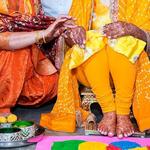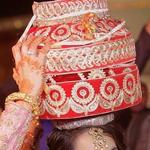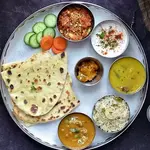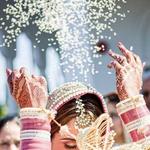Robin & Rick


Punjabi Wedding

Maiyan
The first tradition we will do on Jaggo night is the Maiyan. Friends and family will take turns rubbing the vatna (a dough-like mixture of turmeric, flour and mustard oil) on to the brides skin. The vatna is a natural skin purifier so this ceremony signifies cleansing the skin and purifying the bride and groom for their wedding day. Guests will be given a gaana (auspicious red thread), which they tie around their wrist.

Choora
After the Maiyan is the Choora ceremony. The maternal uncles will put the choora (wedding bangle bracelets) on the bride as a mark of their blessings. The bangles represent the bride as a newlywed and traditionally are worn for the first 40 days of marriage. The color red signifies good luck and prosperity for the newlyweds.

Jaggo
The last ceremony for the evening will be the Jaggo, which translates to wake up! It’s a party to celebrate the night before the wedding with singing and dancing. Jaggos (decorative pots with lights) will be carried over head and passed around like a procession. All guests are encouraged to take part and join the festivities!

Baraat and Milni
On the morning of the wedding, the grooms family and friends will meet before the ceremony at a set location near the marriage venue. They will lead the groom to the marriage venue in a procession known as the baraat, with music and dancing. The brides family and friends will meet at the marriage venue and be ready to receive the baraat, this is called the milni, with a ribbon cutting ceremony.

Anand Karaj
The traditional Sikh marriage ceremony, called the anand karaj, takes place in a Gurdwara (temple) or darbar. This is a room where the Guru Granth Sahib (holy scripture) is laid open at the altar. When entering the darbar, guest must remove their shoes and keep there head covered. Guests pay their respects to the Guru Granth Sahib by bowing and then take a seat; women on the left, men on the right. The groom will take a seat in front of the holy book and the bride will be escorted in and take a seat next to the groom. The bride’s father will taking the palla (grooms scarf) and place it in his daughters hand, which symbolizes giving his daughter away. The bride and groom will then stand to take their laavan.

Laavan
The laavan are the four vows the bride and groom take to complete their marriage. The giani (Sikh priest) will recite a hymn for each laav as the bride and groom walk around the holy scripture four times. Each laav represents a vow that takes the bride and groom through the journey that leads them to a union of husband and wife. The giani will then make a final ardas (prayer) and guests will stand before the Guru Granth Sahib and pay their respects once again by bowing. The Sikh marriage is now concluded and guests will be served parsad (a sweet offering).

Langar
After the ceremony a traditional vegetarian Punjabi lunch will be served. During this time guests may offer the newlyweds their blessings and take pictures.

Doli
The Doli signifies the departure of the bride to her new home. The bride will throw a handful of rice behind her as a symbol of leaving her parental home. Relatives will bid her farewell and wish her luck on the beginning of her married life as the newlyweds leave in the wedding car.